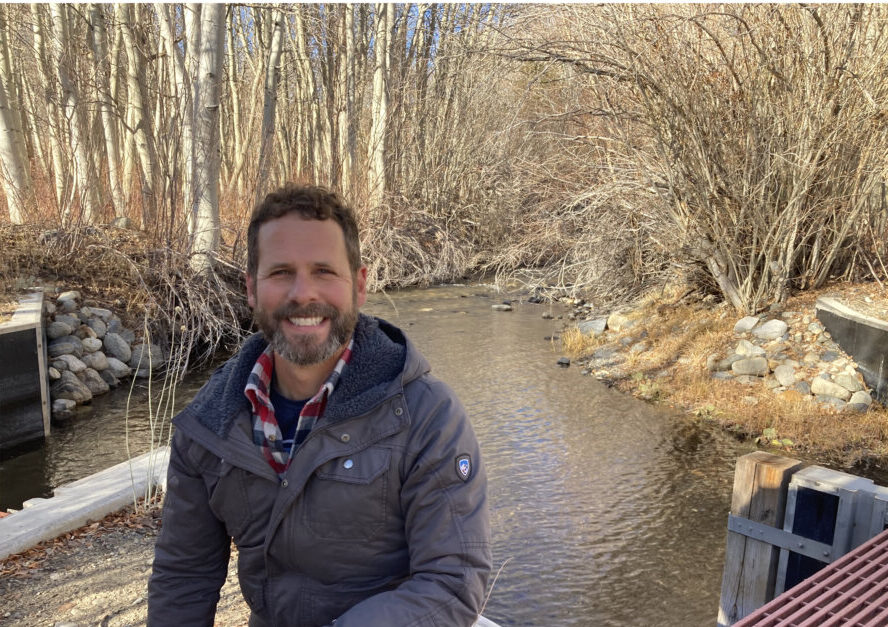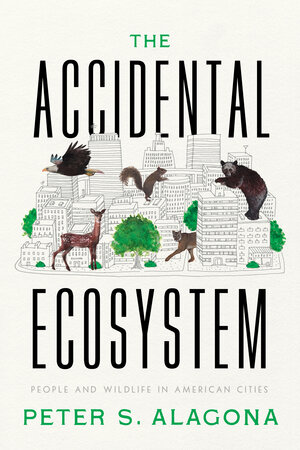For World Wildlife Day, Peter Alagona discusses his new book, The Accidental Ecosystem: People and Wildlife in American Cities.

The Accidental Ecosystem tells the story of how cities across the United States went from having little wildlife to filling, dramatically and unexpectedly, with wild creatures. Today, many of these cities have more large and charismatic wild animals living in them than at any time in at least the past 150 years. Why have so many cities—the most artificial and human-dominated of all Earth’s ecosystems—grown rich with wildlife, even as wildlife has declined in most of the rest of the world? And what does this paradox mean for people, wildlife, and nature on our increasingly urban planet?
As Alagona argues, we have the opportunity to create vibrant urban ecosystems that serve both people and animals. The Accidental Ecosystem calls on readers to reimagine interspecies coexistence in shared habitats, as well as policies that are based on just, humane, and sustainable approaches.
Peter Alagona is a professor of environmental studies at the University of California, Santa Barbara. He is the author of several dozen articles and books, including After the Grizzly: Endangered Species and the Politics of Place in California. Prior to arriving at UCSB, Pete received his PhD at UCLA, and completed fellowships at Harvard and Stanford Universities.
Most people think of city wildlife as consisting mainly of rats, mice, pigeons, and squirrels, but since WW1 a much wider range of animals has moved in. What makes urban environments so surprisingly hospitable to animals?
Only certain creatures are able to live in cities while avoiding the threats and distractions—such as cars, pollution, and noise—that urban spaces pose. For species that are able to cope with these hazards, cities offer a glut of resources, including food, water, shelter, warmth, and safety from predators. Many of these new urbanites are relatively intelligent, omnivorous, and social. Just like the people with whom they share their habitats.
During the early days of Covid lockdown in 2020, there were many sightings of usually elusive animals walking down deserted Main Streets. How did that period inform your research and conception of this book?
When the first round of COVID lockdowns arrived in the spring of 2020, I was writing the final chapters of this book. It was amazing to see so many people turn their attention to a topic I’d been studying for the previous five years! Unfortunately, many of them took away the wrong message. When unusual creatures started appearing in cities around the world, many observers concluded that this was a sign of nature’s resilience. It is true that many urban wildlife populations had been growing for years, and that, when given the chance, some of these creatures came out of hiding. But this does not mean that nature is “healing.” Wildlife populations around the world are suffering, with devastating consequences for humanity—including exposing us to more infectious diseases like COVID-19. We are making a hot mess of our planet, and we need to do way more to protect it than we’re doing now.
What does your ideal urban/wildlife balance look like?
The first place to start is to think of cities as habitats. What kind of habitats do we all want to live in, and how can we design and nurture our habitats to discourage the kinds of creatures we don’t want while favoring those we do? Living with nature is not an outcome — it’s a process.
I’m not sure what my ideal “balance” would look like, but I can say how I think we could move in the right direction. Cities around the country would work with scientists, managers, and residents to better understand the risks and benefits associated with wild animals, the beliefs and values residents hold toward them, and the evidence-based approaches that enable people to better coexist with them. Next, cities would develop urban wildlife plans that support local communities, disseminate quality information, promote public safety, and work toward common goals.
How has the idea of “pest control,” and the corporate interests behind it, altered how we view animals’ place in our cities?
In American cities, most wildlife management takes two forms: pest control and rescue. The prevailing model of urban pest control assumes that wildlife is not a public trust to be nurtured for the common good, but rather a potential problem for individual property owners. Pest control is a service industry. The rescue approach assumes that wild animals themselves are individuals deserving of care and dignity. Rescuing sick or injured wildlife has a more defensible ethical basis than traditional, kill-first-and-ask-questions-later pest management, but neither of these approaches contributes much to the overall goal of promoting healthy communities. Urban wildlife management, like wildlife management in rural areas, should be based on a plan and a set of goals grounded in science and developed with community input.
Isn’t it dangerous to have coyotes walking around urban parks?
Just because an animal is present doesn’t mean it’s dangerous. Animals in distress are potential matters of concern and should be referred to licensed animal control officers. But attempting to capture or kill an animal, just because it’s there, may introduce more risk into a situation than just letting it be. A frightened coyote, for example, may dart into traffic causing an accident. Wild animals that are acting normal, avoiding people, and minding their own business are usually best viewed at a distance and left alone. It is also important to remember that animals like coyotes help people by preying on rodent pests, and that most animal-related human injuries are inflicted by insects, arachnids, and other smaller, less charismatic creatures.
Do we have a moral responsibility to the animals that are moving back into cities? What would that responsibility look like in action?
This is a great question and a matter of much debate. Diverse philosophies, religions, and wisdom traditions—from utilitarianism to Buddhism—agree that, all else being equal, we should seek to reduce the amount of pain and increase the amount of happiness in the world among all sentient beings. We all have an obligation to treat individual animals humanely, even in cases when there is no reasonable choice other than to kill them. I believe we also have an obligation to our communities. Most of us now live not only among groups of people, but also within diverse multispecies communities. It is our duty to do what we can to foster health, wellbeing, and even joy in the ecosystems we inhabit, because doing so increases the happiness of individuals and because communities are more than just the sums of their parts. We’re all interconnected.
